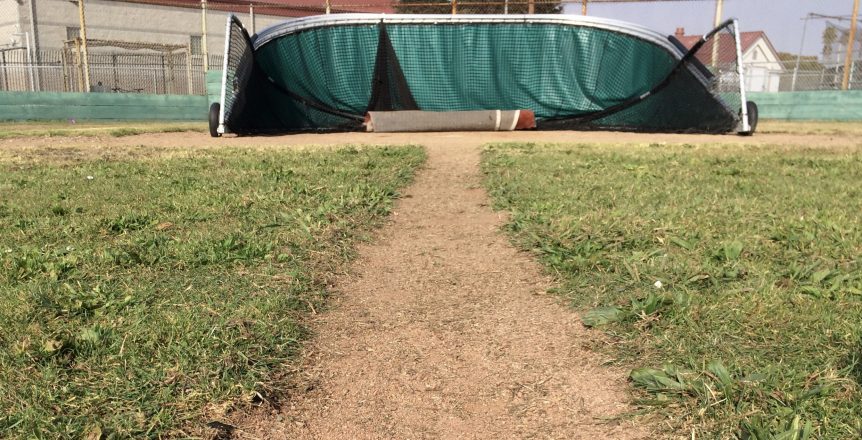
As coaches, we owe the playing generation the best field conditions, preparation, and chance to succeed. As an ode to 50 years of alumni at my latest post and to provide a boost to our mostly inexperienced but eager baseball protégés, I thought it would be advantageous to install a throwback feature at our diamond known in earlier times as the ‘keyhole path.’
And so we did, in the form of a strip of clay-topped soil, extending from the mound to home plate circle – the same width as the front side of home plate and in line with it. The stretch of grassless ground gets its name from old-time keyholes – as one would look as a diamond-shaped lock in which the mound and clay strip would be the space for a key’s teeth to enter and unlock a door.
The understanding I garnered is that the path was a regular feature in early days of hardball and was a direct descendant on some fields from cricket played on the same “pitch.” Rather than a place to walk for the catcher to visit his battery mate, its main purpose was to assist respected members of the community – many of whom had never played baseball. Regardless of eyesight or stature, the path primarily aided in calling balls worthy or not of a swing attempt- not really to be a path for catchers to chat up the hurlers.
A couple of major league parks (take a tip of the cap, Detroit and Arizona!) have wider forms of the keyhole path with sentimentality their main reasoning. I endorse the strip being the same width as home plate as an assist to vision and reaction. Just work on good grass quality (which also entails good seeding, tools and regular water availability) and keep the cinder complete and packed. While pitchers might wear out a patch in front of the mound, try your best to keep the integrity of the path. Use the “replace all divots” golf rule, too.
In my opinion, the keyhole path is visually attractive on multipurpose or baseball-dedicated sports-turf fields, not just grass surfaces, and can even aid as a built-in training tool the battery, the umpire, and the hitters. I encourage all fellow coaches to team with your groundskeepers and volunteers to add a keyhole path to your field for any and all of the reasons we did. It can be yet another facet to enjoy teaching, playing and viewing our great game. Good luck “locking down” the visiting offenses. It can really be a home field advantage.
The keyhole path can improve our baseball optics, reactions, and experience for an even more splendid day at the ballpark. After all, it’s all about finding unique routes that make this game fun for all.
Dan Harrington returned from military service to coach John F. Kennedy High School in 2018. He is a graduate of Lowell High School in San Francisco and Worcester State and has also broadcasting experience with the University of San Francisco, San Francisco State University. He is NFHS-certified and a member of the ABCA and San Francisco Baseball Old-Timers Association.